Philadelphia's core is filled with classic grid urbanism, in a tradition handed down from aeons past. It is replete with narrow and ultra-narrow streets marching along the north-south axis of a key avenue, Broad Street, as well as along the waterfront axis controlled by Kensington Avenue.
But travel a mile or so west, beyond the University of Pennsylvania, and the nature of urbanism becomes very different. Instead of the grid controlling for close-in and narrow streets, it controls for wide, formal avenues in a quasi-parklike setting. The buildings become Victorian confections, and the hypertrophism that develops remains wholly pleasant. It is a different way to build a neighborhood--the streetcar suburb--but by no means is it invalid. This is a good example of what I mean when I say
there are multiple optimal human habitats; just as the traditional form is optimal for one type of urbanism, so too is this form optimal for another.
The real danger lies when regulations enforce one type of urbanism over all others. This constricts supply for other types of urbanism, and when the type favored by regulation becomes déclassé--as is happening today--supply constrictions force prices to skyrocket.
More photos
here.
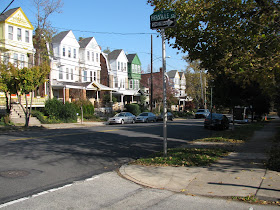 |
| Let's start on Kingsessing Avenue. The larger, more ornamented buildings are scaled to match the wider avenue. |
 |
| A narrower street in University City...Lot line to lot line, this street is as wide as a normal grid street on the other side of the Schuylkill. |
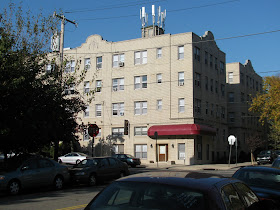 |
| This 1920s apartment building reflects the kinds of neighborhood changes that brought about land use zoning codes in the first place. |
 |
| Chester Avenue. Like Baltimore and Woodland, Chester has an active streetcar line. These avenues are approximately 60 ft. wide--two 8 ft. parking lanes, two 9- to 12-ft traffic lanes (depending on bike lanes), and of course two sidewalks. |
 |
| Streetcar suburbia is urban suburbia. |
 |
| A Southern influence can be seen throughout University City. |
 |
| Sidewalks are comfortably wide, and sometimes even spacious. |
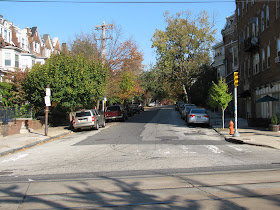 |
| This one-way stretch of 46th is a tad excessive. Almost every street here is two-way. |
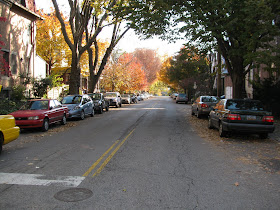 |
| This stretch of (IIRC) Larchwood is typical of University City. Despite their hypertrophism, the avenues are still quite quiet. |
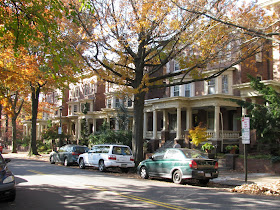 |
| These are some of my favorite houses in the city! They sell for half a mil a pop. |
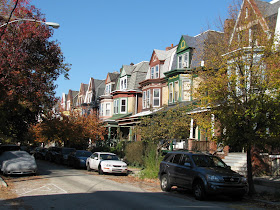 |
| This Cedar Avenue streetscape is emblematic of University City as a whole. |
 |
| Some stone a-fore; heftier density closer to the el pops up behind. |
 |
| Many houses here are twins. These two have turrets buttressing and enforcing one another. The small paved side yards are especially enchanting. |
Why does University City succeed where later hypertrophism fails? Walking this neighborhood is like walking in a park! No wonder why neighborhoods such as this are so popular--there is a certain attraction to living in a park.

No comments:
Post a Comment